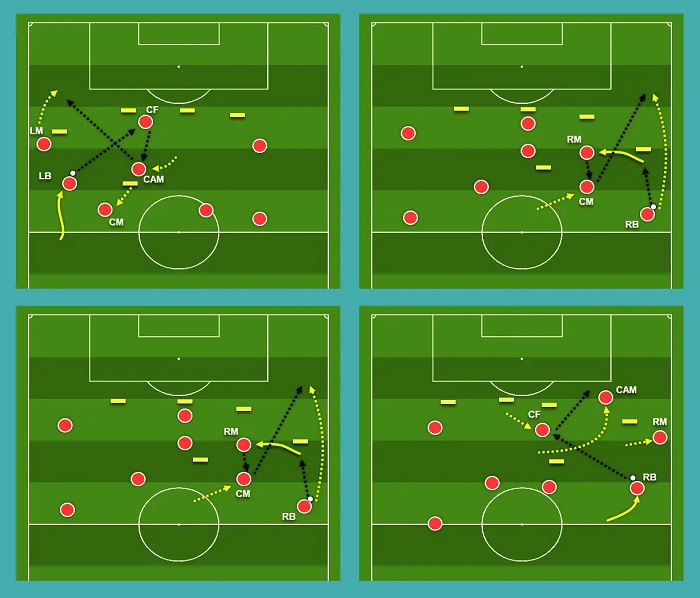Today’s football sees a wide variety of tactical formations. Each approach has its strengths and weaknesses, determined by both its own style of play and the characteristics of the opponent. The Sports Betting API offers bets on a variety of tactical formations. Let’s take a closer look at their features.
4-3-3
This formation, with three central midfielders, is used by many football clubs, including Barcelona and Manchester City. The presence of three midfielders in the center of the field allows for dominance in this area. During the attacking phase, the wingers widen the attacking front, freeing up space for the striker playing in the center. The 4-3-3 formation demonstrates its effectiveness in dynamic counterattacks and active pressing, which is especially valuable in top leagues such as La Liga and the English Premier League.
4-2-3-1
This formation is popular with teams striving for harmony between attack and defense. A pair of central midfielders ensures a solid defense, while three attacking midfielders create scoring opportunities for the forward. Manchester United and the «aristocrats» regularly employ this tactic. It is effective in the German championship, where clubs focus on active attacking play, but also allows for a layered defense.
3-5-2
This tactical model involves a trio of central defenders and a pair of full-backs who energetically support the attacking play. Clubs like Juventus effectively use the 3-5-2 to gain numerical superiority in the middle of the field and on the wings. This formation is effective in Serie A, where athleticism and tactical skill are paramount.
5-3-2
A formation based on a compact defense, used by many teams in defensive strategies. It allows teams to counterattack effectively. An example would be teams playing in lower leagues or international tournaments where defense is important. This formation can be successful in tournaments like the World Cup, where teams often play defensively.
4-4-2
This is a classic formation still used by many clubs, especially in English football. It provides a balance between defense and attack, but can be less effective against teams with strong ball control. However, this formation is suitable for a counter-attacking style of play.
The effectiveness of tactical formations depends on many factors: the quality of the players, the coaching philosophy, and the specifics of the championship. It is important to consider not only the formation itself but also the team’s ability to adapt to the opponent. Modern football requires flexibility and the ability to change tactics depending on the situation on the field, which makes formation analysis especially relevant!








Leave a Reply